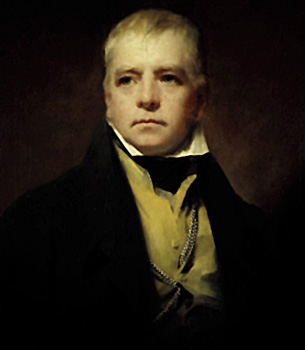 Assamese prose in the Jonaki era saw a further flowering of the Romantic literature of the time. There was a profusion of prose writing in this period, in the form of many short stories, novels and essays. These are best analysed by looking at the works of the individual authors. Where Chandrakumar Agarwala was a pioneer in poetry, Lakshminath Bezbarua was the high priest of Assamese prose and is still considered to be so. Bezbarua`s prose works are remarkable for their modern style and vision, qualities found in his novels, short stories, and essays. His first novel, Padum Konwori (The Lotus Queen, 1905), was structured around a historical event. It appeared originally in installments in the Jonaki. But his Kripabor Baruar Kakotor Topola (Kripabor Barua`s Bundle of Papers, 1904; originally serialized in Jonaki) established his reputation. This and the later Kripabor Baruar Obhotoni (1909) are farcical and satirical collections that touch on Assamese politics and society. Bezbarua had the Dickensian ability to combine serious social commentary within humorous depictions. His Nomal, Pasani, and Sikarpati Nikarpati are all in a similar farcical vein. However, his prose contributions extended beyond this. His Junuka (Anklets, 1910), Burhi Air Sadhu (Grandmother`s Tales, 1911), and Kokadeuta Am Natilora (Grandfather and Grandson, 1912) are collections of traditional Assamese folktales that revived and popularized this age-old oral genre for adults as well as children. Among Bezbarua`s original short story collections are Surabhi (1909), Sadhu Kathar Kuki (1912), and Jon-biri (1913). Baheen (Flute), the journal Bezbarua edited from 1909 to 1929, became a vehicle for his essays on literature and language. Though the sheer volume and skill of Bezbarua`s prose tend to overshadow the works of other prose writers, other writers did produce a body of novels, histories, and critical studies during this period.
Assamese prose in the Jonaki era saw a further flowering of the Romantic literature of the time. There was a profusion of prose writing in this period, in the form of many short stories, novels and essays. These are best analysed by looking at the works of the individual authors. Where Chandrakumar Agarwala was a pioneer in poetry, Lakshminath Bezbarua was the high priest of Assamese prose and is still considered to be so. Bezbarua`s prose works are remarkable for their modern style and vision, qualities found in his novels, short stories, and essays. His first novel, Padum Konwori (The Lotus Queen, 1905), was structured around a historical event. It appeared originally in installments in the Jonaki. But his Kripabor Baruar Kakotor Topola (Kripabor Barua`s Bundle of Papers, 1904; originally serialized in Jonaki) established his reputation. This and the later Kripabor Baruar Obhotoni (1909) are farcical and satirical collections that touch on Assamese politics and society. Bezbarua had the Dickensian ability to combine serious social commentary within humorous depictions. His Nomal, Pasani, and Sikarpati Nikarpati are all in a similar farcical vein. However, his prose contributions extended beyond this. His Junuka (Anklets, 1910), Burhi Air Sadhu (Grandmother`s Tales, 1911), and Kokadeuta Am Natilora (Grandfather and Grandson, 1912) are collections of traditional Assamese folktales that revived and popularized this age-old oral genre for adults as well as children. Among Bezbarua`s original short story collections are Surabhi (1909), Sadhu Kathar Kuki (1912), and Jon-biri (1913). Baheen (Flute), the journal Bezbarua edited from 1909 to 1929, became a vehicle for his essays on literature and language. Though the sheer volume and skill of Bezbarua`s prose tend to overshadow the works of other prose writers, other writers did produce a body of novels, histories, and critical studies during this period.
Benudhar Rajkhowa`s (1872-1956) Lakhimi Tirota (The Auspicious Wife) is notable in that it is a dialogue depicting a good or ideal wife. His other prose writings include essays such as Bihu on the practice of this Assamese festival, English essays such as Short Accounts of Assam (1915), and Historical Sketches of Assam (1917), among others. Surya Kumar Bhuyan (1894-1964), known primarily as a historian, established the art of the biography with his Anandaram Barua (1920). Rajanikanta Bordoloi (1867-1939) produced an impressive four-volume saga of the final days of the Ahom dynasty and of the Burmese invasion and misrule in Manomati (1900), Rangili (1925), Nirmal Bhakat (1928), and Rohdoi Ligiri (1930). These novels are all the more significant since the horror of the Burmese invasion was still fresh in the collective minds and imaginations of the Assamese. Though Bordoloi wrote other historical novels and is often likened to Sir Walter Scott, his romantic novel Miri Jiyori (1895) remains one of the most enduring romances in Assamese literature.













